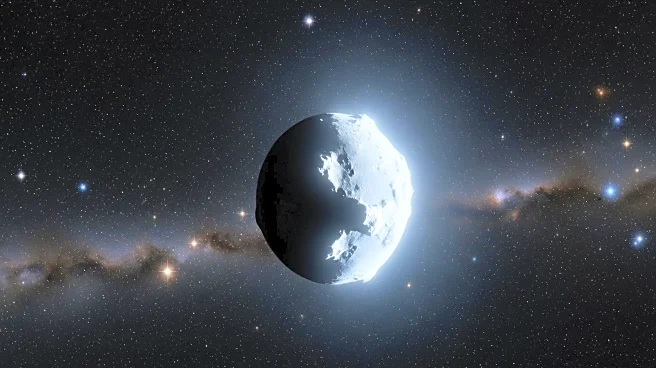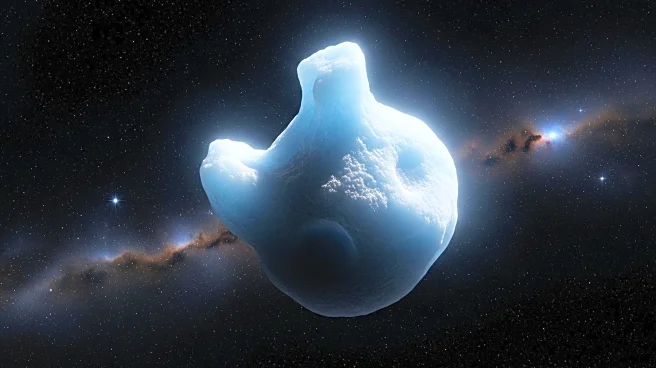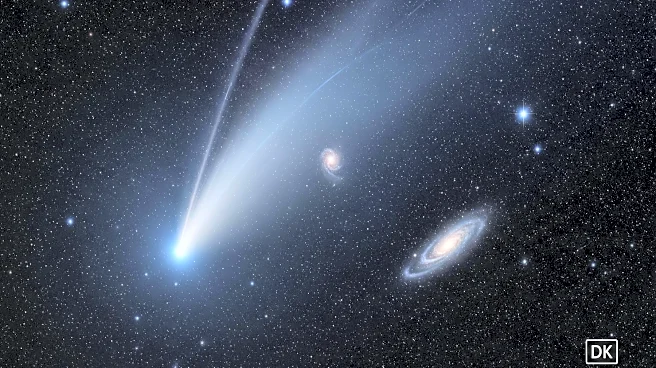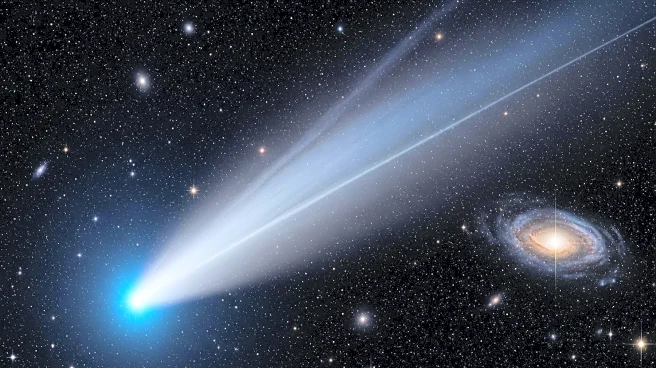What's Happening?
A team of astronomers led by Sihao Cheng from the Institute for Advanced Study has discovered a trans-Neptunian object, 2017 OF201, which may qualify as a dwarf planet. This object, located at the edge of the solar system, has an orbit that spans 25,000 years. The discovery was made using advanced computational methods to identify the object's trajectory, and it was officially announced by the International Astronomical Union's Minor Planet Center. The object's extreme orbit and large size set it apart from other distant bodies, suggesting a complex history of gravitational interactions. The discovery challenges existing theories about the solar system's edge, particularly the notion that the space beyond Neptune is empty.
Why It's Important?
The discovery of 2017 OF201 has significant implications for our understanding of the solar system. It suggests that the area beyond the Kuiper Belt is not as empty as previously thought, potentially housing numerous other objects. This challenges the Planet Nine hypothesis, which posits the existence of another planet influencing the orbits of trans-Neptunian objects. The presence of 2017 OF201 as an outlier could indicate that the gravitational dynamics of the solar system are more complex than currently understood. This discovery also highlights the potential for open science, as the data used was publicly available, allowing for broader participation in astronomical research.
What's Next?
Further observations are needed to determine the exact size of 2017 OF201, potentially using radio telescopes. The discovery opens up new avenues for research into the outer solar system, with astronomers likely to continue searching for similar objects. The findings may prompt a reevaluation of existing models of the solar system's structure and dynamics. Additionally, the discovery underscores the importance of open scientific data, which could lead to more collaborative and inclusive research efforts in the future.
Beyond the Headlines
The discovery of 2017 OF201 raises questions about the ethical and practical implications of open science. By utilizing publicly available data, the research team demonstrated that groundbreaking discoveries are not limited to those with access to large telescopes. This democratization of scientific research could lead to increased participation from citizen scientists and students, potentially accelerating the pace of discovery and innovation in astronomy.












